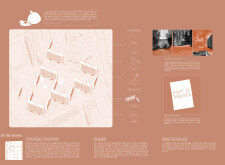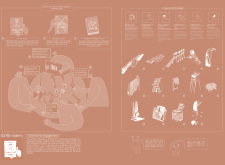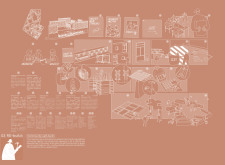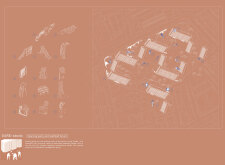5 key facts about this project
At its core, Hallfield Estate is conceived to provide affordable housing in a densely populated urban area, emphasizing the importance of accessible living spaces. The design integrates various residential units, ensuring a mix of accommodation types suitable for diverse demographics. Central to this project is the focus on creating communal areas that promote social interaction, reflecting modern urban living's emphasis on connectivity and collaboration among residents.
The architectural design incorporates a range of materials aimed at balancing aesthetic appeal with functionality. Concrete, a predominant material, offers both structural integrity and a modernist visual language. Brick elements add warmth and texture to the facades, creating a nuanced relationship with the surrounding urban environment. Glass features in facades and communal spaces to enhance natural light, contributing to well-being and comfort for residents. Green spaces are interwoven throughout the estate, not only enriching the aesthetic landscape but also fostering biodiversity and offering recreational opportunities within an urban context.
A unique aspect of the Hallfield Estate project is its emphasis on community involvement in the design process. The initiative encourages residents to actively participate in discussions surrounding their living environment, which is critical in developing a sense of ownership and pride. This participatory approach extends to governance matters, where residents are invited to engage with decision-making, thereby shaping the future of their community. Such an inclusive strategy marks a shift from traditional top-down urban planning to a more egalitarian model, where the voices of those living in the space are given prominence.
The project also introduces concepts like self-build initiatives, encouraging residents to contribute physically and creatively to the estate’s evolution. This encourages collaboration and reinforces community ties while addressing some of the broader economic challenges faced in urban development. The Hallfield Estate is seen not only as a place of residence but as a community hub, where diverse groups can come together, fostering a vibrant social fabric.
As urban landscapes continue to evolve, the Hallfield Estate serves as a study in balancing historical context with modern urban challenges. Its design embodies an understanding of architecture as a living practice that must adapt to the changing needs of society. By examining the interplay between space, community, and governance, this project offers thoughtful insights into how urban housing can be restructured to enhance the quality of life.
For those interested in the finer details of this project, including architectural plans, sections, and design elements, there is ample opportunity to delve deeper into the project presentation. Engaging with these resources will provide a comprehensive understanding of the innovative approaches adopted in the Hallfield Estate redesign. The careful consideration given to layout, materiality, and resident involvement illustrates a thoughtful evolution of architectural practices that prioritize community and adaptability within the urban landscape.


























